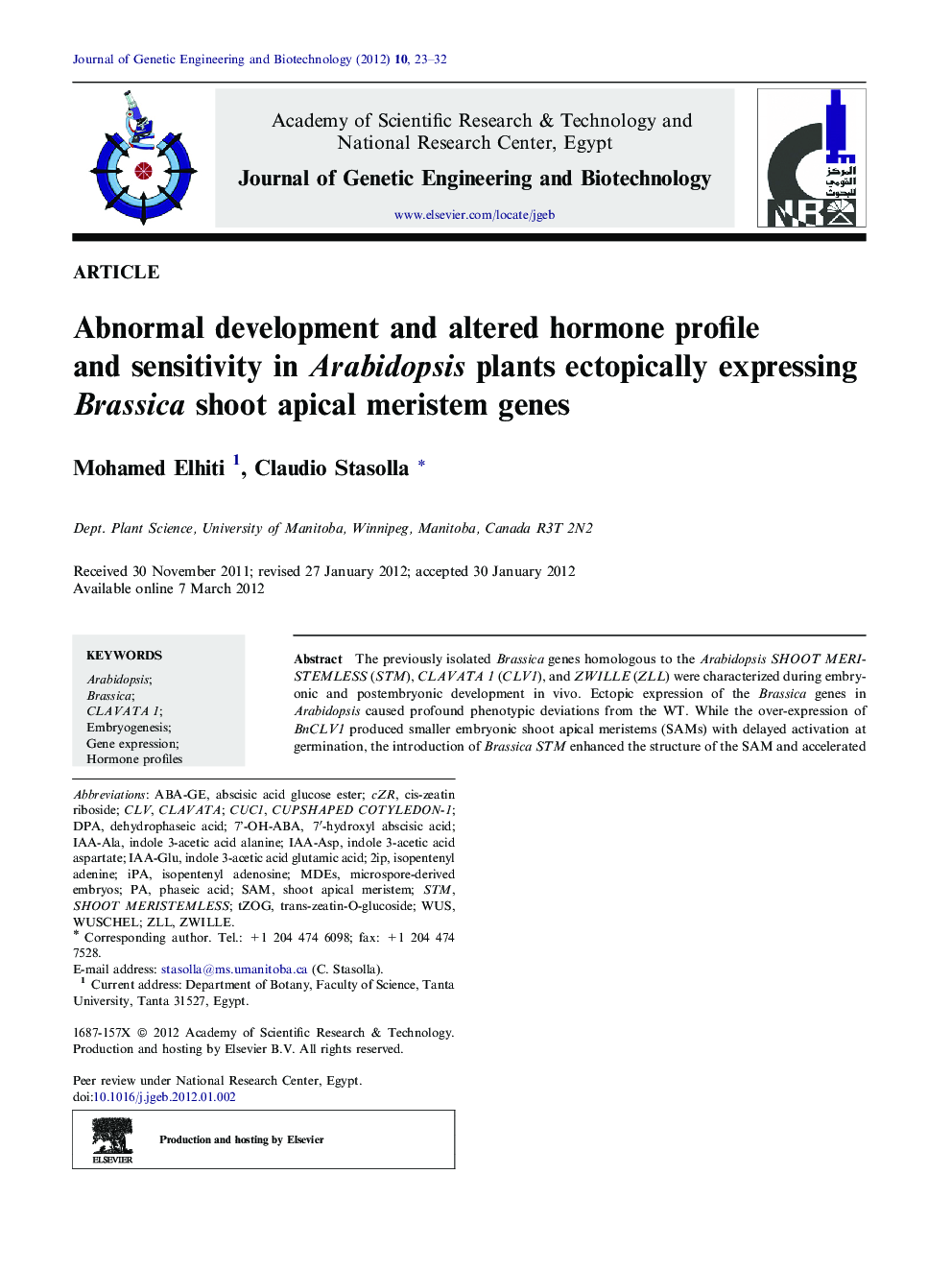| Article ID | Journal | Published Year | Pages | File Type |
|---|---|---|---|---|
| 2087968 | Journal of Genetic Engineering and Biotechnology | 2012 | 10 Pages |
The previously isolated Brassica genes homologous to the ArabidopsisSHOOTMERISTEMLESS (STM), CLAVATA1 (CLV1), and ZWILLE (ZLL) were characterized during embryonic and postembryonic development in vivo. Ectopic expression of the Brassica genes in Arabidopsis caused profound phenotypic deviations from the WT. While the over-expression of BnCLV1 produced smaller embryonic shoot apical meristems (SAMs) with delayed activation at germination, the introduction of BrassicaSTM enhanced the structure of the SAM and accelerated meristem reactivation. These opposite behaviors were related to differential levels of endogenous cytokinins and abscisic acid (ABA), as well as the expression of genes regulating meristem activity. Low levels of ABA and increased accumulation of the cytokinins trans-zeatin-O-glucoside (t-ZOG), cis-zeatin-O-glucoside (c-ZOG), trans-zeatin riboside (t-ZR), and isopentenyladenosine (iPA) were measured in seedlings of Arabidopsis plants over-expressing the BrassicaSTM. This was in contrast to BnCLV1 over-expressors which had very low levels of cytokinins. During the early phases of meristem reactivation the expression of the ArabidopsisAtKNAT6, AtWUSCHEL, and AtCUPSHAPEDCOTYLEDON-1 was induced by the introduction of the BrassicaSTM whereas that of AtCLAVATA3 was inhibited. An opposite expression profile was measured in lines ectopically expressing BnCLV1. Other phenotypic abnormalities observed in Arabidopsis plants over-expressing the BrassicaSTM included lobed leaves, ectopic meristems, and increased number of reproductive organs, i.e. flowers and siliques. The introduction of BnZLL-1 and -2 did not cause major developmental abnormalities.
